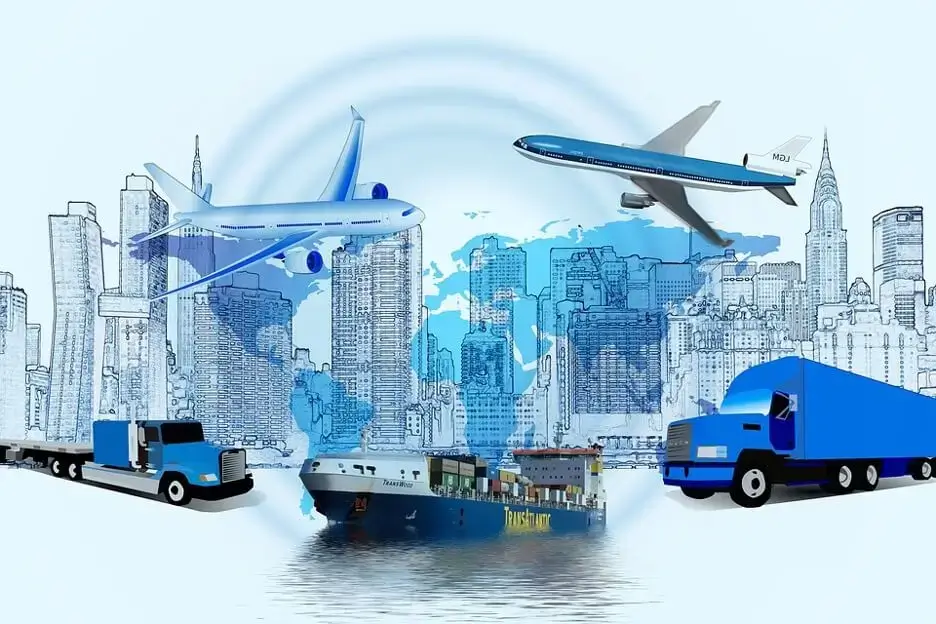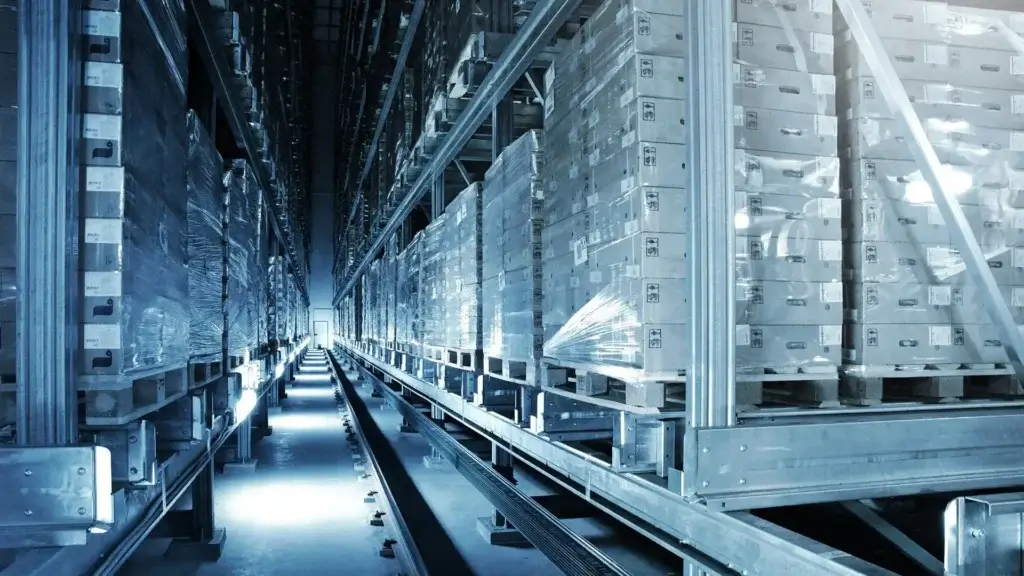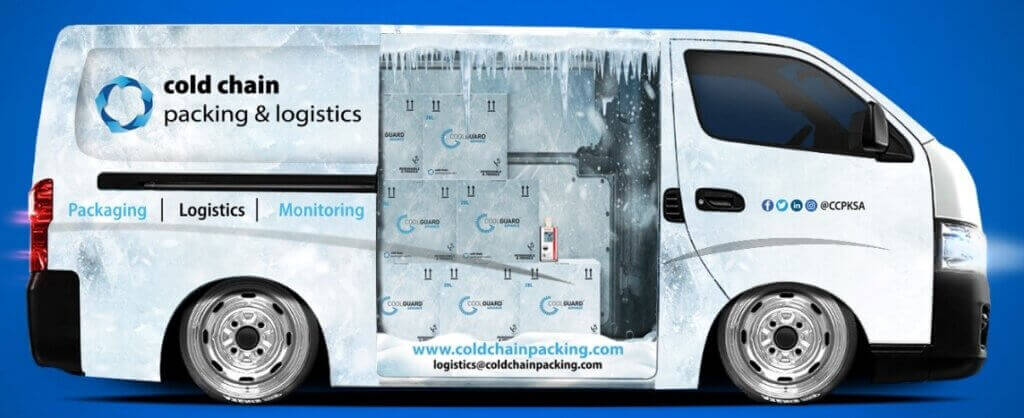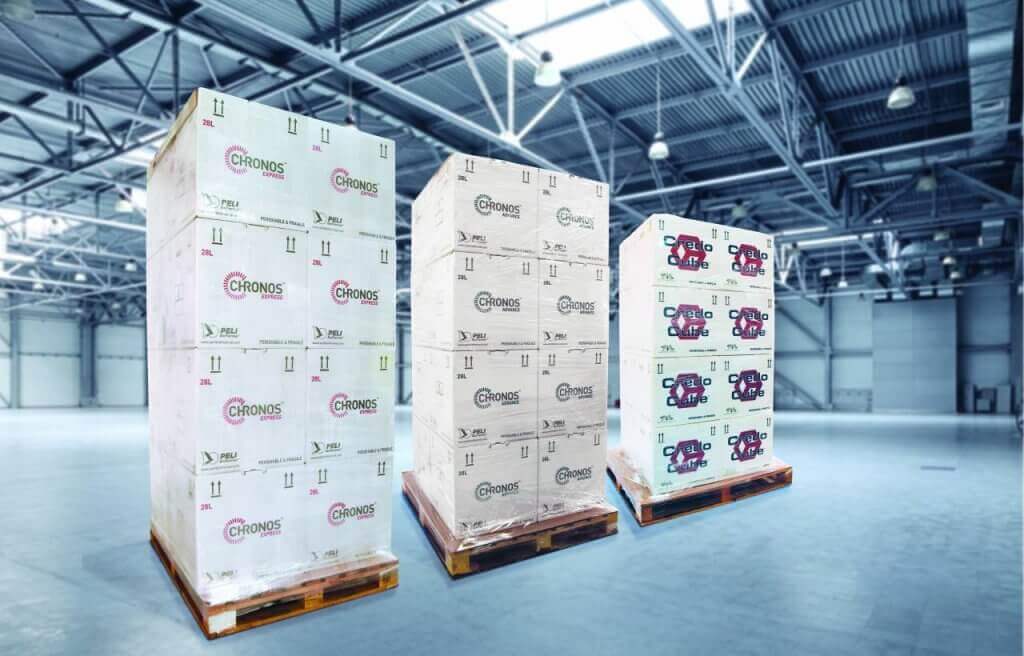
The market for cold chain logistics has grown significantly over the past ten years, particularly in the wake of the pandemic. This is a result of customers’ growing need around the globe for cold chain items that may be securely delivered, including medications, vaccinations, lab samples, food, drinks, dairy products, etc.
As a matter of fact, the cold chain logistics industry is expected to develop at a compound annual growth rate (CAGR) of 15.1% from $242.39 billion in 2021 to $647.47 billion by 2028.
It is evident that the need for perishable goods to be transported and stored at regulated temperatures is rising rapidly. Additionally, now is the ideal moment to join the cold chain logistics sector.
Your go-to resource if you want to work in cold chain logistics will be this article.
Cold Chain Logistics: What is it?

The technology and procedure known as “cold chain logistics” makes it easier to move temperature-sensitive goods safely using thermal and refrigerated packaging techniques. The procedure prevents such items from going bad, which affects each step of the supply chain.
For example, from the time of manufacture to the last minute of immunization, goods like vaccines must be kept in a specific temperature range. Alternatively, you may need to transfer biological cargo swiftly and securely from one location to another.
In addition, cold-insulated transport vehicles are used for product distribution, and temperature-controlled distribution and warehouses are used for storage.
The Importance of Cold Chain Logistics

The cold chain technology plays a pivotal role in enhancing the security of the global food sector and providing superior nutrition and medical supplies to even the most distant corners of the globe.
The following are some direct effects of efficient cold chain logistics on contemporary businesses, particularly in the food and beverage and pharmaceutical industries:
- Products are less likely to spoil, which reduces the need to replenish inventory and increases revenue per shipment.
- Consumers are less likely to receive defective goods, and higher-quality items increase consumer happiness.
- This kind of logistics has a wider range and opens up new commercial potential.
- Improved adherence to rules governing the transit of food and medical goods (as set forth by organizations such as the transit Security Administration).
What Is the Process of the Cold Chain?

For temperature-sensitive items to stay safe and of the highest quality, the cold chain keeps the whole supply chain within a narrow temperature range.
The five phases that comprise the cold chain process are as follows:
- Obtaining merchandise from vendors -Pallets or crates are used for the unloading of cargo from lorries or trains. Subsequently, putting them in freezers or storage chambers to be deep frozen according to their kind or state.
- Keeping items in a location that is suitable and provides optimal circumstances for extended storage, such as a temperature-controlled facility. It may be in the supplier’s warehouse or a third-party facility, depending on the logistics agreements and shipping requirements of all parties involved in a given cargo.
- Preparing the products for shipment, which includes packing and labeling them for eventual delivery.
- Loading the packed items into the specified cold chain fleet for the last delivery. Temperature-controlled vehicles will be used by the cold chain fleet for last-mile deliveries.
- Delivering items that are sensitive to temperature to the right person.
Five Crucial Factors To Take Into Account For Cold Chain Delivery

The following are essential components for a successful cold chain distribution:
1. Cooling mechanisms
The purpose of these systems is to lower the items’ temperature. After the commodities are taken for additional processing, the proper temperature minimums are reached.
2. Cold storage
When commodities are being shipped to a distant market, cold storage becomes very crucial. In order to lessen the perishable character of the chilled commodities, freezing temperatures are applied using materials such as liquid nitrogen. The freshness and safety of the perishable commodities are guaranteed by these storage methods for use and consumption.
3. Monitoring systems
Temperature is a determining factor in the commodities delivered in cold chain distribution. It becomes crucial to make sure the integrity of life-saving goods, such as pharmaceuticals and vaccinations, is maintained. Hence, the likelihood of spoiling is decreased by using trustworthy temperature monitoring systems.
4. Cold transport
It is an additional important component in the supply chain that maintains the integrity of the frozen goods. It assists in transporting the items to their intended location while preserving their integrity and the proper temperature.
5. Cold processing and distribution
To fulfill client demand, cold processing and distribution facilities combine cargoes from several sources and deliver them to different locations. Additionally, they may combine loads from several locations and unload them for return delivery to suppliers. These facilities save transportation costs, enhance inventory management systems, and boost productivity, all of which assist cold chain logistics businesses operate the cold chain more effectively.
The Main Challenges With Cold Chain Shipments

It is difficult for supply networks to move cold chain shipments because of their sensitivity to temperature changes. These are a few of the major obstacles that cold chain shipments must overcome.
1. Erroneous temperature regulation
When exposed to temperatures outside of the authorized range, temperature-sensitive products like medications, perishable food like frozen meat or seafood, and even commonplace things like frozen veggies or ice cream become worthless and constitute a safety risk. The need for a constant temperature is therefore unavoidable.
2. Products that are broken or packaged poorly
Receiving shipments that are damaged might potentially seriously reduce your earnings. Products that are defective, improperly packaged, or exposed to improperly controlled temperatures in the trailer may all make things more difficult. Use RFID monitoring technology to protect it against these accidents so that timely notifications and corrections are made.
3. Contaminating problems
Germs are proliferating in the cold chain cooling systems. Microbiological development can be brought on by poorly maintained or malfunctioning freezers and refrigerators. Cold chain businesses must continuously check their freezers and cold storage to prevent mold growth.
4. Transportation problems and delays
A transport malfunction is the worst case scenario for a cold chain supply chain. A transportation medium failure, such as a truck breakdown, results in a damaged load, lost income, and wasted time and resources. Additionally, during these transitional periods, temperature-sensitive commodities swiftly deteriorate.
How Can Cold Chain Logistics Challenges Be Overcome?

Let’s now examine how cold chain logistics providers resolve the aforementioned issues and uphold the highest standards.
1. Put your delivery order first.
Products that are sensitive to temperature and timing need delivery that are timely, efficient, and error-free. For all of your last-mile deliveries, you can make sure of that by using multi-stop route planning and optimization software.
2. Selecting the appropriate vehicle and equipment for traveling
In cold-chain distribution, the packing technique is essential to preserving the temperature during storage and transportation. Packaging systems can be classified as either active or passive. Active packaging uses blast freezers and temperature-controlled air circulation to actively manage the product’s temperature Using a hybrid active and passive packing method is advised. However, a lot relies on the scale of your cold chain operation.
3. Pre-checks
Make sure your drivers do a pre-trip examination of your goods and vehicles whether you’re utilizing a truck or another type of transportation.
Examining these items just a few minutes will prevent hours of lost goods and wasted time, enhancing
4. Conduct routine fleet checks
Your cold chain fleet has to undergo routine inspections by chill chain logistics services. To prevent an unplanned breakdown, you must constantly examine your transport medium.
5. Give customers real-time updates
Giving your clients access to real-time tracking information about the estimated time of arrival (ETA) and delivery status guarantees that they will be there when the delivery is made. Upper assists you in notifying your clients automatically for the same. It guarantees that you won’t have to attempt delivering the same box more than once, preserving the integrity of your cold chain shipments.
Improve Your Cold Chain Logistics Efficiency with Cold Chain Packaging and Logistics
We offer experienced, customized supply chain solutions using a blend of strong technology and in-depth knowledge to guarantee that our clients receive the highest level of attention and efficiency throughout the course of their shipments.
Domestic Transportation- Our custom domestic road freight solution guarantees both operational excellence and a financially sensible choice. It is fully connected with our other supply chain services. You can follow the journey of your goods in real time with the advanced tracking equipment installed in each of our temperature-controlled, thermally mapped vans.
Passive Packaging Solutions– Peli BioThermal works only with Cold Chain Packing® as its Middle East distributor. When it comes to single-use and reusable temperature-controlled packaging, pharmaceutical industries and other businesses hoping to significantly reduce costs and increase quality in their cold chains are moving to Peli BioThermal.
We guarantee product quality, minimize excursion rates, cut packaging costs, and optimize Total Cost of Ownership throughout the whole supply chain with our cutting-edge, patented solutions and consulting services.
Temperature Monitoring & Mapping– In addition to helping you keep track of temperature and humidity levels in storage areas and within your shipment during transportation, our monitoring systems and solutions for rooms, equipment, and products in transit cover Critical Control Points in your supply chain.
We gather, store, and process data, then evaluate it for release or alert based on stability standards.
Live Monitoring & Tracking Solutions– We provide Global Visual Management to forward-thinking companies and manufacturers worldwide who require communication with their assets or supply chain management, including biopharma, high-value, high-theft risk goods.
Using the intelligence of our technology, patented software programs, and human resources, we have a solution, regardless of the assets of stationary distant power plants or biological items being transported around the globe.